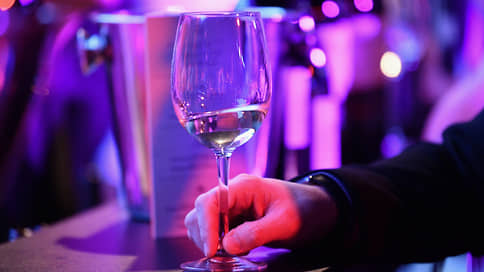Drinks are taking their toll – Kommersant FM
[ad_1]

Demand for non-alcoholic wine, beer and cider is growing in Russia, as reported by retailers, including grocery chains, Forbes writes. In particular, in SimpleWine stores, sales of such wine increased by 44% in 2023. A similar trend was noticed in Vkusville: they say that the demand for wine, cider and alcohol-free beer has doubled over the past six months.
Fortwine executive director Alexander Lipilin also sees increased interest among Russian consumers in such drinks. According to him, this is also due to global trends: “On the one hand, this is a healthy lifestyle. On the other hand, there is a tendency to complicate gastronomic consumption, that is, when people do not just want to eat in order to feel full, but want to enjoy it. In this case, non-alcoholic wines come to the rescue. There are also those who cannot drink alcohol for health reasons.
At first it was beer, which was distributed quite actively, now it is wine. We must pay tribute – the quality of these drinks has improved significantly.
That is, if 10-20 years ago it was mainly grape juice, now it is really wine, that is, a product that was wine, but in which only alcohol remains. Of course, the taste characteristics change a little, but the quality of such drinks has increased greatly in recent years.
For example, over the past five years we have presented two sparkling wines from the fairly well-known producer Cava Codorniu. Now we are planning to bring still wines from the Riesling grape variety. In principle, I watch the portfolios of my colleagues in the market and I can say that the share of soft drinks in them is increasing.
The fact is that regulation of the market for non-alcoholic products is much simpler, that is, there is no need for a license or specific requirements associated with Unified State Automated Information System, customs clearance and excise stamps. Therefore, of course, the competitive environment there is wider than that of pure alcohol, since a large number of companies are added that distribute water, tea, whatever.”
As Forbes writes, citing market analysts, the share of non-alcoholic products may take up to 10% of the total sales of alcoholic beverage producers in the next three years. Demand will mainly be for alternative wine, beer and cocktails. Businesses are actively developing this segment, largely because the costs of producing non-alcoholic lines are easily recouped, noted the head of the Infoline-Analytics company, Mikhail Burmistrov:
“In fact, interesting players are emerging, primarily, of course, those who work in the wine market. We see that it is there that the production of a wide range of grape products gives them improved margins.
This can be either grape seed oil or non-alcoholic wine. Therefore, in this case, either manufacturing companies or distribution companies are working most actively in this direction, which, thanks to such lines, have the opportunity to comprehensively expand and develop sales.
When such products are launched, at the first stage we are talking about slightly higher marketing and other expenses, but overall this is a potentially promising category. In fact, such a drink is somewhat similar to grape juice, but it costs like wine, not like juice. Therefore, from a product point of view, this is, of course, an interesting story. So, of course, there will be attempts to enter this market. Another question is that as he matures, he will also demonstrate a more serious competitive situation. Some players may leave it after some time.”
Restaurateurs, in turn, are including more and more non-alcoholic products in their wine lists. Thus, the owner of the Mister Chang chain and several Moscow bars, Evgenia Levandovskaya, notes that the attitude of visitors to such drinks has recently changed noticeably: “Before, “non-alcoholic wine” sounded like a slap in the face. Now this is an integral part of any card, because many people drive, they are not going to leave the car at a restaurant, they need to be mobile and attend several events in one day. In addition, there are conscious mothers and fathers.
So, yes, often there is not just one bottle of such a drink on the table, but five options for different tastes: both sweeter and drier non-alcoholic wines. Demand has increased.
I only heard about strong drinks, that they came out with non-alcoholic whiskey. So far it sounds as funny as non-alcoholic wine once did. No one has asked him yet, but the wine is already in constant use.”
According to a study by the Romir holding, the number of followers of a healthy lifestyle in Russia grew by 5% last year. At the same time, 75% of Russians have a generally positive attitude towards healthy lifestyle. However, according to the Finexpertiza agency, sales of strong alcohol in 2023 reached a seven-year high: the average Russian drank almost 3% more alcohol than in 2022, and almost 20% more than in 2018.
Everything is clear with us – Telegram channel “Kommersant FM”.
[ad_2]
Source link





